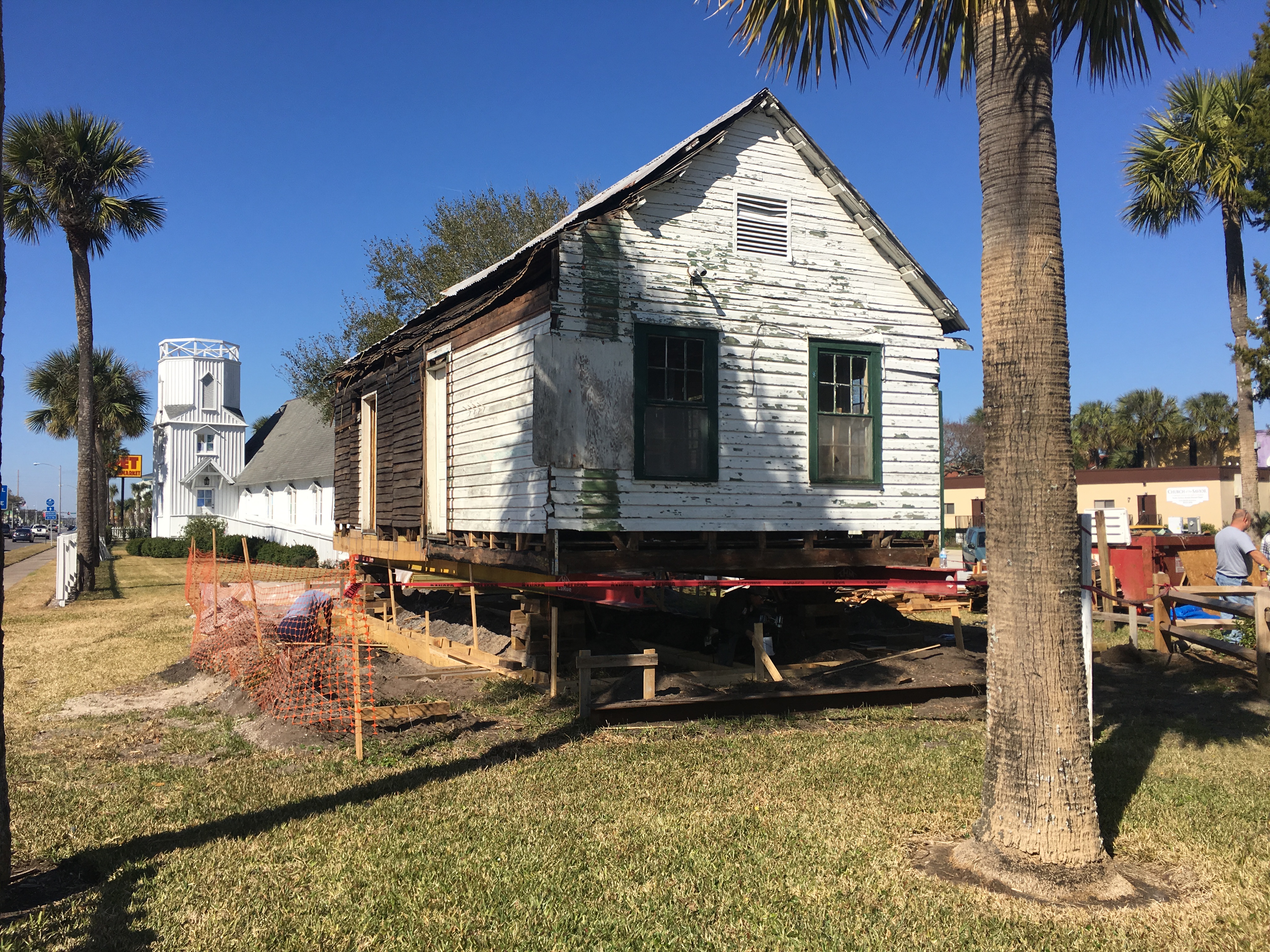The Oesterreicher-McCormick Homestead
While this cabin doesn’t look like much here, there is a lot of history in this home that is the second oldest in Duval County Florida. The oldest is the main house on the Kingsley Plantation that was built on Fort George Island.
The Oesterreicher-McCormick Homestead was built in 1873 by Thomas Oesterreicher and his friend Thomas Booth after returning home from the Civil War, the two built the two-room, tin roofed Cracker House from Cypress and Palm and oak. My husband Keith and I visited the Beaches Museum where this cabin has been moved to be restored on a recent visit to Jacksonville Beach. I was fascinated with both the cracker terminology and the history of the home.
Cracker is a term given to Florida cowboys and ranchers, the first American pioneers. The term comes from the sound of the whip which the “cracker cowboy” used to herd the smaller “cracker cows”.

Originally located near Twenty Mile Road in Durbin Swam, the Oesterreicher-McCormick Homestead was part of the McCormick Ranch in Palm Valley. The home was moved to the museum and is now being restored. The museum had a fundraiser to come up with the monies to move the museum at a cost of around $200,000. The fundraiser kicked off in 2012 and they museum coordinated efforts with architect James Dupree. The house was moved on May 12, 2016. The Oesterreicher-McCormick Homestead is just part of the bevy of buildings that includes the Chapel by the Sea, the old Pablo Station Post Office, the Florida East Coast Railway Mayport Depot, the FEC House and the Cummer Lumber Company steam locomotive. The house is comprised of the Duval County “cracker” architecture showing pioneer living during the 19th and 20th century. The home once restored will be used in conjunction with the Chapel.
When Thomas Oesterreicher and Mike Booth built the cabin, Thomas was only 17-years old. He became very successful with thousands of acres surrounding the house. Thomas married 14-year old Ella Francis Ortagus and together they had nine children and raised them in the cabin. The home was eventually expanded to include two more rooms, but they only moved the two original rooms to the Beaches Museum.
Over the years, land was sold off for development with the last going to the Davis family purchasing land in 2005. The Davis family though allowed the descendants to have access to the home and move it. The house since the 1930’s was used as weekend cabin by the family, friends and local clubs.
Now that the house has been moved to the Beaches Museum restoration is underway. For more information on the cabin or the museum, log onto http://www.beachesmuseum.org.



